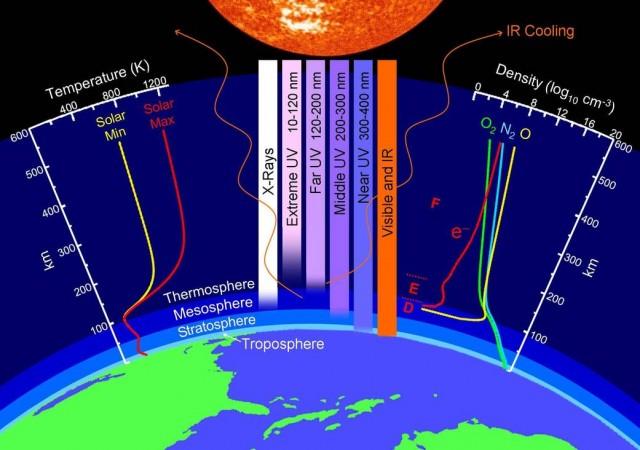
A new study has discovered something unexpected and rare -- the presence of ammonia in Earth's lowest atmospheric layer. The colourless gas with a characteristic pungent smell has been detected in the uppermost layer of Earth's troposphere above India and China.
Also Read: EmDrive: Beating NASA, China claims to have carried out successful test of 'impossible technology'
The researchers feel that it's an outcome of population and economic booms that India and China are experiencing. Ammonia, a compound of nitrogen and hydrogen with the formula NH₃, is most likely coming from livestock farming and urea fertilisation in the two countries.
Ammonia is required for good growth of crops and plants, and the gas acts as a cooling agent which is also involved in cloud formulation. This gas emission is likely to reverse the adverse impact of the greenhouse gas effect and aid in healing the environment, Live Science reported.
The researchers found that ammonia can be a boon for scientists as it may help in predicting climate change and can be used for climate evaluating models.
The troposphere reaches seven to 20km (four miles to 12 miles) above sea level, and includes around 80 percent of Earth's atmosphere and weather phenomena.

Satellite data about upper troposphere was collected by researchers from Germany, Mexico and the United States for a decade, from June 2002 and April 2012. The data was regarding ammonia concentrations during summer monsoons and it was found that atmospheric ammonia was present above 12 to 15km (7.5 miles to 9.3 miles).
The study found that the region above north India and southeast China was concentrated with 33 ammonia molecules per trillion air molecules. The levels of atmospheric ammonia concentrations were not found by the scientists during any other season, the scientists revealed.
"We have presented the first evidence of ammonia being present in Earth's upper troposphere above 10km (6.2 miles)," the researchers wrote in the study.
The study also revealed that agricultural ammonia generated on the Earth's surface can reach troposphere and can be found during summer monsoons.
"Observations show that ammonia is not washed out completely when air ascends in monsoon circulation," the study's lead researcher, Michael Hopfner of Karlsruhe Institute of Technology in Germany, was quoted as saying in a statement. "Hence, it enters the upper troposphere from the boundary layer close to the ground, where the gas occurs at relatively high concentrations," he added.
The research also came up with a finding that atmospheric ammonia is likely to reduce the impact of human hazards on the atmosphere, but the cloud is likely to trap the heat released by Earth, which can make the planet warmer.
An earlier research had also revealed that cloud formulation can take place because of ammonia released from seabird excreta called guano. Scientists believe that it could have a cooling impact on the planet.















